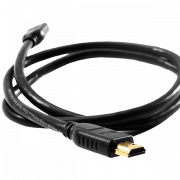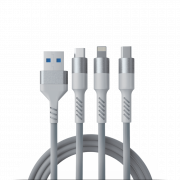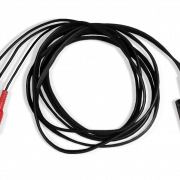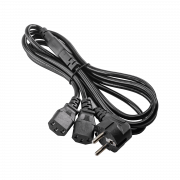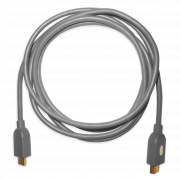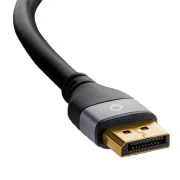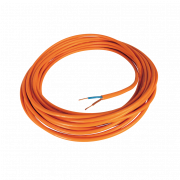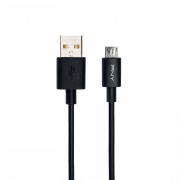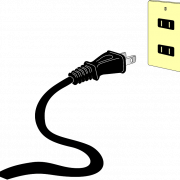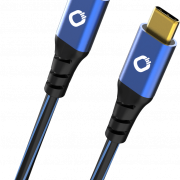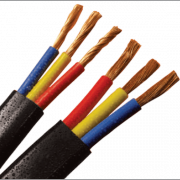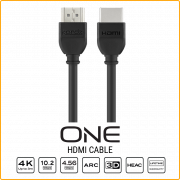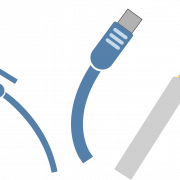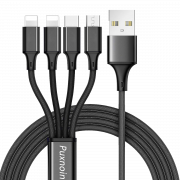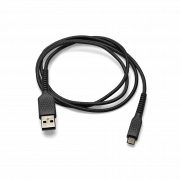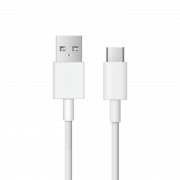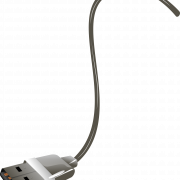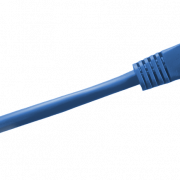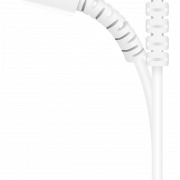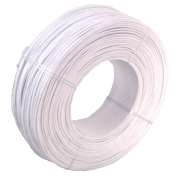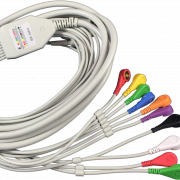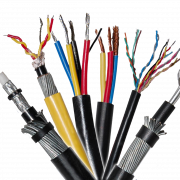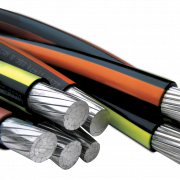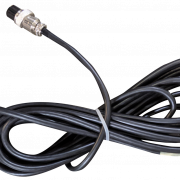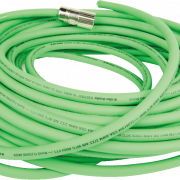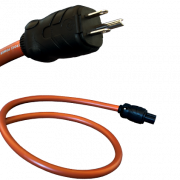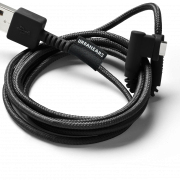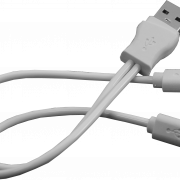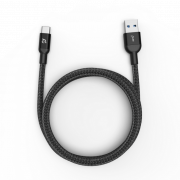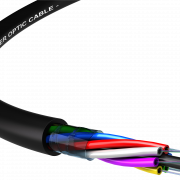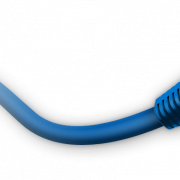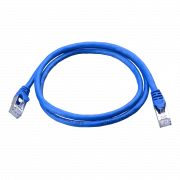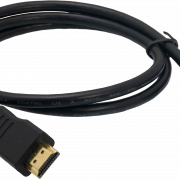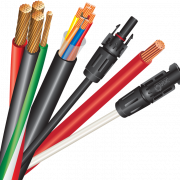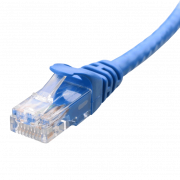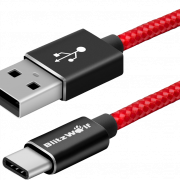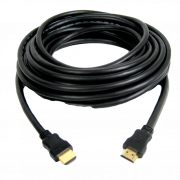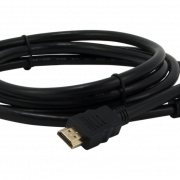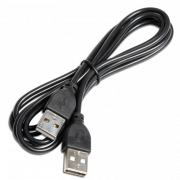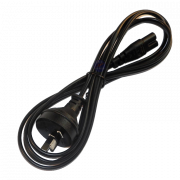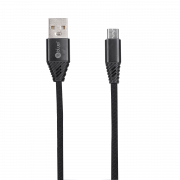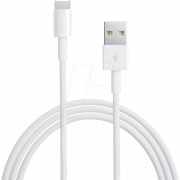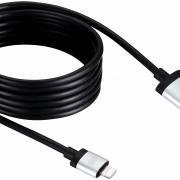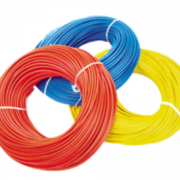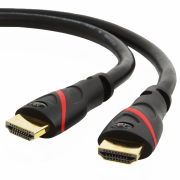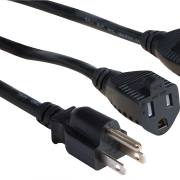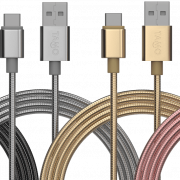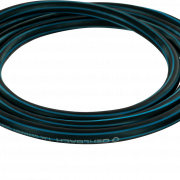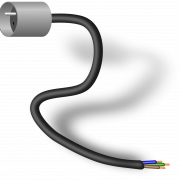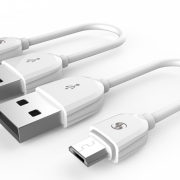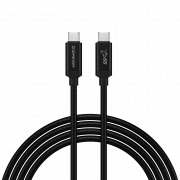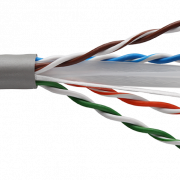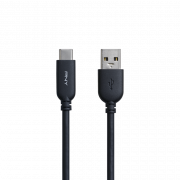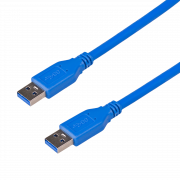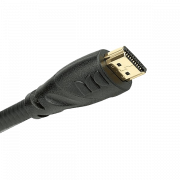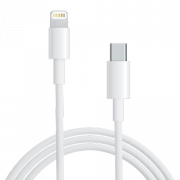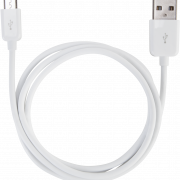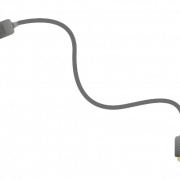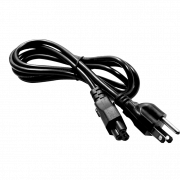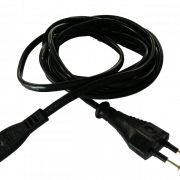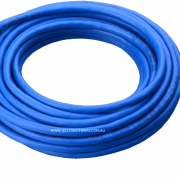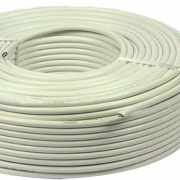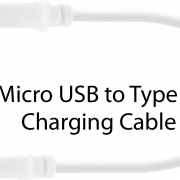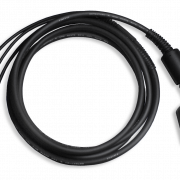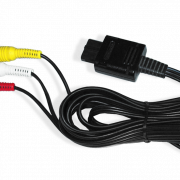Download top and best high-quality free Cable PNG Transparent Images backgrounds available in various sizes. To view the full PNG size resolution click on any of the below image thumbnail.
License Info: Creative Commons 4.0 BY-NC
An electrical cable is a bundled or side-by-side arrangement of one or more wires to convey electric current.
A cable assembly, also known as a cable tree or cable harness, is a device that connects many terminals together. A cable assembly is made up of one or more electrical cables and the connectors that go with them. A cable assembly is not always ideal for connecting two devices. Still, it can be used as a component of a larger product (e.g., to be soldered onto a printed circuit board with a connector mounted to the housing).
The term cable initially referred to a nautical line of a specified length used to anchor huge ships by combining many ropes to create a strong thick line. As electric technology progressed, individuals began to use groups of wires and different sheathing and shackling methods that resembled mechanical cabling, and the name “electrical wiring” was coined. An electrical wire was frequently insulated with fabric, rubber, or paper throughout the nineteenth and early twentieth centuries. Except for high-reliability power lines, plastic materials are commonly utilized nowadays. Because of its usage in electrical communications, the word has been linked with communications.
Electrical cables link two or more devices, allowing electrical signals or power to be sent from one to the other. Cables are used for a variety of purposes, and each one requires customization. In electronic equipment, cables are commonly used for power and signal circuits. Undersea cables are used for long-distance communication. Electricity cables, particularly high-voltage wire, are used for bulk transfer of alternating and direct current power. Electrical cables are widely utilized in the wiring of buildings for lighting, power, and control circuits that are permanently fixed. When compared to alternative wiring methods, installation labor is reduced since all of the circuit conductors necessary may be placed in a cable at the same time.
An electrical cable is a physical assembly made up of one or more conductors, each having their insulation and optional screens and separate coverings, assembly protection, and protective covering (s). The wires in electrical cables can be stranded to make them more flexible. Smaller individual wires are twisted or braided together in this technique to generate more significant, more flexible wires than solid wires of comparable size. The maximum flexibility is gained by bundling tiny wires before concentric stranding. Copper wires in a cable can be bare or plated with a thin layer of another metal, most often tin, but also gold, silver, or other materials. Tin, gold, and silver are less prone to oxidation than copper, which can help extend the life of wires and make soldering easier. Tinning is also utilized to keep the strands moisturized. Rubber insulation was removed with the assistance of tinning. The cable is extendable (CBA – as in telephone handset cords) because tight lies during stranding.
Trunking, cable trays, cable ties, and cable lacing are all options for securely fastening and organizing cables. Strain relief devices or cable ties can be used to secure continuous-flex or flexible cables used in moving applications within cable carriers.
Current tends to run down the conductor’s surface at high frequencies. The skin effect is the term for this.
Download Cable PNG images transparent gallery.
- Data Cable PNG HD Image
Resolution: 820 × 600
Size: 171 KB
Image Format: .png
Download
- Fast Charging Cable PNG Clipart
Resolution: 1000 × 1000
Size: 128 KB
Image Format: .png
Download
- Cable PNG Image
Resolution: 1605 × 1004
Size: 859 KB
Image Format: .png
Download
- Cable Transparent
Resolution: 3000 × 3000
Size: 1595 KB
Image Format: .png
Download
- HDMI Cable Transparent
Resolution: 2889 × 2752
Size: 1899 KB
Image Format: .png
Download
- HDMI Cable PNG Clipart
Resolution: 728 × 540
Size: 114 KB
Image Format: .png
Download
- Ethernet Cable PNG Download Image
Resolution: 1024 × 1024
Size: 579 KB
Image Format: .png
Download
- Ethernet Cable PNG Image
Resolution: 961 × 445
Size: 65 KB
Image Format: .png
Download
- Data Cable PNG Pic
Resolution: 800 × 800
Size: 142 KB
Image Format: .png
Download
- Cable PNG Clipart
Resolution: 800 × 745
Size: 17 KB
Image Format: .png
Download
- Data Cable PNG Download Image
Resolution: 757 × 1080
Size: 81 KB
Image Format: .png
Download
- Electric Cable PNG Clipart
Resolution: 901 × 555
Size: 87 KB
Image Format: .png
Download
- Data Cable PNG
Resolution: 800 × 800
Size: 96 KB
Image Format: .png
Download
- Electric Cable PNG Free Download
Resolution: 2400 × 1439
Size: 131 KB
Image Format: .png
Download
- Data Cable PNG Image
Resolution: 1200 × 1200
Size: 660 KB
Image Format: .png
Download
- Cable PNG Free Download
Resolution: 1956 × 1999
Size: 933 KB
Image Format: .png
Download
- Fast Charging Cable PNG Free Download
Resolution: 700 × 700
Size: 32 KB
Image Format: .png
Download
- Data Cable Transparent
Resolution: 2035 × 2400
Size: 195 KB
Image Format: .png
Download
- Cable PNG Picture
Resolution: 960 × 480
Size: 46 KB
Image Format: .png
Download
- Cable PNG Free Image
Resolution: 921 × 750
Size: 16 KB
Image Format: .png
Download
- Ethernet Cable Transparent
Resolution: 960 × 434
Size: 121 KB
Image Format: .png
Download
- USB Cable PNG Image
Resolution: 1269 × 2929
Size: 271 KB
Image Format: .png
Download
- Ethernet Cable PNG
Resolution: 900 × 936
Size: 176 KB
Image Format: .png
Download
- Electric Cable
Resolution: 1829 × 1711
Size: 786 KB
Image Format: .png
Download
- Electric Cable PNG Picture
Resolution: 1500 × 1197
Size: 1442 KB
Image Format: .png
Download
- Electric Cable PNG Free Image
Resolution: 2094 × 1113
Size: 1878 KB
Image Format: .png
Download
- Cable
Resolution: 1440 × 802
Size: 1283 KB
Image Format: .png
Download
- Ethernet Cable PNG Clipart
Resolution: 1024 × 588
Size: 899 KB
Image Format: .png
Download
- Cable PNG File
Resolution: 728 × 423
Size: 274 KB
Image Format: .png
Download
- Charging Cable
Resolution: 1949 × 1221
Size: 1266 KB
Image Format: .png
Download
- USB Cable PNG
Resolution: 3307 × 2282
Size: 1201 KB
Image Format: .png
Download
- Charging Cable PNG
Resolution: 800 × 800
Size: 375 KB
Image Format: .png
Download
- Electric Cable PNG File
Resolution: 4185 × 2798
Size: 156 KB
Image Format: .png
Download
- Ethernet Cable
Resolution: 1056 × 391
Size: 1616 KB
Image Format: .png
Download
- Ethernet Cable PNG Free Download
Resolution: 1500 × 1500
Size: 592 KB
Image Format: .png
Download
- Electric Cable PNG HD Image
Resolution: 2897 × 1801
Size: 1293 KB
Image Format: .png
Download
- Cable PNG HD Image
Resolution: 1472 × 1250
Size: 706 KB
Image Format: .png
Download
- Ethernet Cable PNG Picture
Resolution: 1094 × 898
Size: 950 KB
Image Format: .png
Download
- Electric Cable PNG Pic
Resolution: 770 × 715
Size: 492 KB
Image Format: .png
Download
- Ethernet Cable PNG Free Image
Resolution: 800 × 799
Size: 68 KB
Image Format: .png
Download
- Data Cable
Resolution: 867 × 724
Size: 329 KB
Image Format: .png
Download
- HDMI Cable
Resolution: 860 × 859
Size: 477 KB
Image Format: .png
Download
- Electric Cable PNG Download Image
Resolution: 1023 × 614
Size: 508 KB
Image Format: .png
Download
- Data Cable PNG Clipart
Resolution: 800 × 800
Size: 505 KB
Image Format: .png
Download
- Cable PNG Pic
Resolution: 1000 × 750
Size: 299 KB
Image Format: .png
Download
- Data Cable PNG Free Download
Resolution: 3000 × 3000
Size: 724 KB
Image Format: .png
Download
- Fast Charging Cable
Resolution: 758 × 812
Size: 145 KB
Image Format: .png
Download
- Electric Cable PNG High Quality Image
Resolution: 1198 × 805
Size: 1052 KB
Image Format: .png
Download
- Charging Cable PNG Image
Resolution: 2362 × 1554
Size: 578 KB
Image Format: .png
Download
- Electric Cable PNG Images
Resolution: 640 × 480
Size: 205 KB
Image Format: .png
Download
- HDMI Cable PNG
Resolution: 1500 × 1500
Size: 1188 KB
Image Format: .png
Download
- Cable PNG Download Image
Resolution: 1600 × 900
Size: 1438 KB
Image Format: .png
Download
- USB Cable Transparent
Resolution: 1801 × 638
Size: 454 KB
Image Format: .png
Download
- Data Cable PNG Picture
Resolution: 1920 × 933
Size: 331 KB
Image Format: .png
Download
- Electric Cable PNG
Resolution: 2400 × 2306
Size: 476 KB
Image Format: .png
Download
- Fast Charging Cable PNG
Resolution: 700 × 452
Size: 217 KB
Image Format: .png
Download
- Cable PNG High Quality Image
Resolution: 2048 × 2048
Size: 724 KB
Image Format: .png
Download
- Electric Cable PNG Image
Resolution: 1082 × 526
Size: 296 KB
Image Format: .png
Download
- Data Cable PNG Free Image
Resolution: 800 × 800
Size: 130 KB
Image Format: .png
Download
- Data Cable PNG File
Resolution: 2304 × 2304
Size: 1565 KB
Image Format: .png
Download
- Electric Cable Transparent
Resolution: 742 × 600
Size: 142 KB
Image Format: .png
Download
- Fast Charging Cable PNG Image
Resolution: 640 × 480
Size: 75 KB
Image Format: .png
Download
- Fast Charging Cable Transparent
Resolution: 1092 × 1148
Size: 577 KB
Image Format: .png
Download
- HDMI Cable PNG Image
Resolution: 820 × 407
Size: 23 KB
Image Format: .png
Download
- Cable PNG Images
Resolution: 1000 × 824
Size: 218 KB
Image Format: .png
Download
- Cable PNG Image File
Resolution: 900 × 640
Size: 73 KB
Image Format: .png
Download
- Ethernet Cable PNG File
Resolution: 793 × 541
Size: 156 KB
Image Format: .png
Download
- Ethernet Cable PNG HD Image
Resolution: 1308 × 714
Size: 873 KB
Image Format: .png
Download
- USB Cable
Resolution: 1578 × 743
Size: 250 KB
Image Format: .png
Download
- Cable PNG Photo
Resolution: 1605 × 1004
Size: 714 KB
Image Format: .png
Download
- Cable PNG
Resolution: 1200 × 676
Size: 391 KB
Image Format: .png
Download
- Ethernet Cable PNG Pic
Resolution: 1200 × 1140
Size: 757 KB
Image Format: .png
Download
